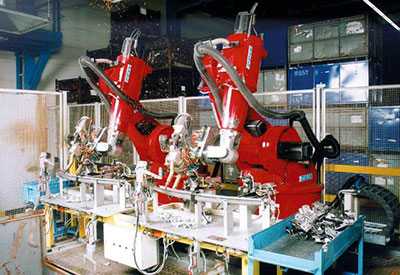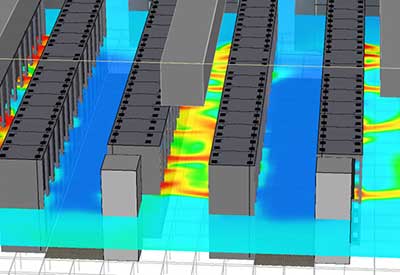Nouvelle norme de sécurité pour les robots : meilleures pratiques pour un outil de productivité en plein essor

Nouvelle norme du Groupe CSA, qui sera publiée d’une journée à l’autre, portant sur la sécurité des robots et des systèmes robotisés, comprend de nouveaux outils conviviaux pour aider les lieux de travail à mieux évaluer les risques, à construire un système robotisé en toute sécurité et mesurer sa sécurité fonctionnelle. « Cette plus récente version de la norme rend prioritaire l’évaluation des risques », dit Tom Eastwood, président du comité technique chargé de la norme CSA-Z-434 – Robots industriels et systèmes robotisés. « Les lieux de travail doivent pouvoir évaluer les risques de tous les aspects de la cellule d’automatisation qu’ils assemblent. »
Cette nouvelle norme arrive alors que les robots et systèmes robotisés intègrent de plus en plus les lieux de travail. Ici, au Canada, les ventes de robots ont augmenté en 2013 de 29%. Partout dans le monde, les ventes mondiales annuelles de robots sont également en forte croissance.
Il est important de faire l’évaluation des risques, mais il est tout aussi important d’évaluer les meilleures pratiques au moment de la mise en œuvre selon Jim VanKessel, directeur de JVK Industrial Automomation Inc, vice-président du comité technique. « Il faut pouvoir mettre en service une pièce de l’équipement et le faire de façon sécuritaire. Cette norme est le meilleur guide pour tous ceux qui évaluent la santé et la sécurité d’un nouveau système de prédémarrage ou modifé. »
Cette nouvelle norme intègre les normes de conception de la robotique internationale et n’est pas une norme uniquement canadienne.
La norme CSA-Z434 combine les exigences pour :
• la fabrication de robots industriels, leur remise à neuf et la reconstruction
• l’intégration ou l’installation de système de robotisation
• la sauvegarde de méthodes pour protéger les travailleurs.
Ces caractéristiques rendent la nouvelle norme utile pour les entreprises de toutes tailles, dont celles qui envisagent l’introduction de systèmes robotisés. «La taille et le prix des robots sont en baisse, en particulier avec de plus petits robots, » souligne Eastwood. « Ils deviennent beaucoup plus accessibles, même pour les petites entreprises qui cherchent à innover. Les entreprises qui ne se sont pas penchées sur les robots précédemment peuvent maintenant penser à les introduire dans leur processus. »
Source: International Federation of Robotics, http://www.ifr.org/industrial-robots/statistics/
CSA Group’s new robot and robot systems safety standard, to be released any day now, includes new user-friendly tools to help workplaces conduct risk assessments, build a safe robot system, and quantitatively measure its functional safety. “This latest version of the standard makes risk assessment priority one,” says Tom Eastwood, chair of the technical committee responsible for CSA-Z434 – Industrial Robots and Robot Systems and a machine safeguarding specialist for Workplace Safety & Prevention Services. “Workplaces need to conduct risk assessments for all aspects of the automation cell they’re putting together.”
It’s a timely approach as more and more workplaces introduce robots, including such innovations as simultaneous motion and collaborative robots. Here in Canada, robot sales grew in 2013 by 29%. Around the world, annual worldwide sales of robots are also growing by double digits.
The standard’s focus on risk assessments is all about implementing best practices, says Jim VanKessel, principal of JVK Industrial Automation Inc. and vice-chair of the technical committee. “To take a piece of hardware and put it into operation is one thing; to do it in a safe manner is quite something else. This standard is the best practice guideline for anyone conducting a Pre-Start Health and Safety Review of a new or modified piece of equipment.”
Another key enhancement for users: this version incorporates international robotics design standards. According to VanKessel, “CSA-Z434 is now a world safety standard, not just a Canadian standard.”
“This is a boon to Canadian workplaces because so many businesses are multinational,” explains Eastwood. “It means they can be consistent from country to country in the design and application of their robotic cells.”
International standards are written to address new machines being built, whereas Canadian standards have always included sections on safety training and procedures for end users.
CSA-Z434 combines both by providing requirements for
• industrial robot manufacture, remanufacture and rebuild
• robot system integration or installation
• safeguarding methods to protect workers.
These features make the new standard useful to firms of all sizes, including those considering introducing robot systems. “The size and price of robots have been dropping, especially with smaller robots with smaller payloads,” says Eastwood. “They’re becoming much more accessible, even for smaller firms looking to innovate. Firms that wouldn’t have looked at robots previously can now think about introducing them into their process.”
Who uses robots
Annual worldwide sales of robots are growing by double digits. These industries are the primary users of robots, or automation systems, based on annual supply:
• automotive
• electrical/electronics
• metal
• rubber and plastics
• food
• pharmaceuticals and cosmetics
What’s driving automation
Robots are taking over dangerous, tedious and dirty jobs that are impossible or unsafe for people to perform. Here are some other drivers:
• a need for greater energy efficiency and the availability of new materials such as carbon composites, which require new production processes
• global competition, requiring greater productivity and higher quality
• growing consumer markets, requiring expansion of production capacities
• shrinking product life cycles
• a growing variety of products requiring flexible automation.
Find out more about CSA-Z434 – Industrial Robots and Robot Systems http://shop.csa.ca/en/canada/industrial-robotics/cancsa-z434-03-r2013/invt/27017992003.
This article first appeared in the November issue of WSPS Network News, a monthly e-newsletter published by Workplace Safety & Prevention Services.












